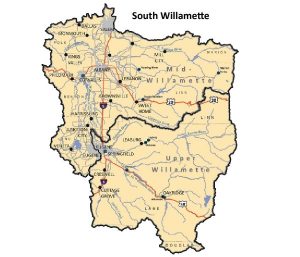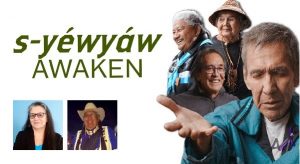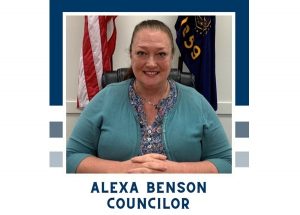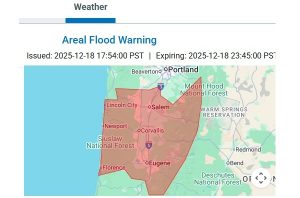Greg Macpherson, Aimée Okotie-Oyekan celebrate the 1776, 1973, and 2023 revolutions
7 min read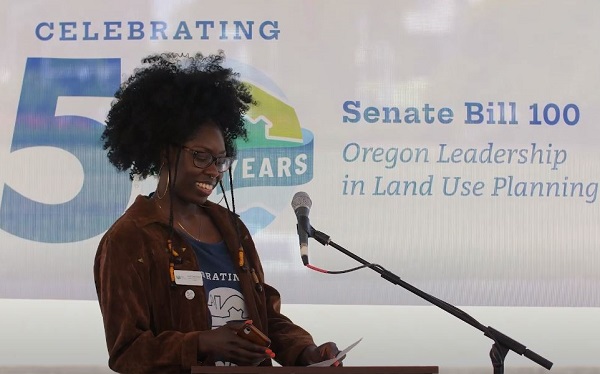
To mark the 50th anniversary of Oregon’s land use planning program:
Gregory Hector Macpherson: You know, we Americans think of ourselves as a revolutionary people. In 1776, it was armed conflict to break away from Britain. But you know, revolution doesn’t just mean acts of violence. It is really a political process on forming a new way of looking at the world and how to operate within it.
And 50 years ago, Oregon saw its own revolution. In 1973, a visionary generation formed a new way of thinking about the landscape and how to live in it by enacting Senate Bill 100. The result is an ‘Oregon Way’ of shaping the landscape that departs dramatically from what happens elsewhere. You know what happens in other states.
Economic interests and the elected officials beholden to them decide what gets built and where. Here in Oregon, decisions get made through an open, participatory process to determine what will advance our shared goals.
The visionary generation that created Senate Bill 100 has now largely passed on.
Oregon’s legendary Gov. Tom McCall was an early departure. In 1982, a ballot measure to repeal Senate Bill 100 gained momentum in Oregon, and was being pushed by advocates who claimed it was land use planning that had forced Oregon into a deep recession. Tom McCall, suffering from terminal cancer, summoned his remaining energy to campaign against the measure.
I remember him coming to a rally in downtown Portland, looking frail and gaunt, but he would not be denied. I suspect it was against doctor’s orders, but he was there. And the end result in November was a dramatic victory in defeating that measure, and so our system could continue. And just a few weeks later, in early January of 1983, Tom McCall died.
My father, Sen. Hector Macpherson, organized the group that formulated Senate Bill 100 and sponsored the bill in the 1973 session. As you heard, he later served a decade on LCDC, lived to age 96, and he actually attended the 40th anniversary celebration here at the Capitol a decade ago, but now he’s gone as well.
Others of the departing, founding generation are an honor roll of leaders. Ted Hallock, who sponsored the bill along with my father. L. B. Day, the first chair of the commission and a key player in the legislative, lobbying process.
And more recently, we’ve lost some of the once-young activists who protected the vision of the founders: Henry Richmond, creator of 1000 Friends of Oregon. And Bob Stacey, who led 1000 Friends through the turbulent times of ballot measures 37 and 49. And in an echo of Tom McCall’s unto death commitment to this program, Jim Rue passed on last fall, only shortly after leaving the directorship of DLCD. [Arnold Cogan.]
The labors of these heroes are over, but the work they were engaged in continues. Oregon’s unique system of statewide planning has been affirmed several times by the voters. However, it was created by legislation and can be weakened or even repealed by legislation. In each session, we see an onslaught of bills trying to carve out exceptions, launch pilot projects outside urban growth boundaries, or loosen the standards that protect working lands.
Increasingly, those who want to do something inconsistent with the statewide planning goals approach a legislator for a bill to supersize what they want to do. We must continue to push back these bills. Otherwise, we will see the statewide program of sound planning whittled away over time. Eternal vigilance, they say, is the price of liberty. It is also the price of protecting Oregon’s landscape.
Those of us who defend Senate Bill 100 today are the next generation descendants of the revolutionaries who created it.
Please indulge me in a family story. Senate Bill 100 was signed into law on May 29, 1973, which was my parents’ 30th wedding anniversary. They celebrated that date by attending the ceremony at which Tom McCall signed the bill at the Capitol.
And it was fitting that they were both there because they were a team. Hector and Katherine (or Huck and Kitty, as they were known to the family and friends), had spent the prior two years working hard to make it happen. They always said that its passage was the greatest anniversary gift they could imagine.
I recall my father being asked years later whether he was frustrated to have led the formulation of Senate Bill 100 and then have Tom McCall take the most visible role in passing it. “Not a bit,” he said, noting that without Tom McCall’s prestige and tremendous powers of communication, the bill would not have passed.
It calls to mind what Harry Truman once said: “It is amazing what you can accomplish if you do not care who gets the credit.” So it was with Senate Bill 100, which was a close-run thing. After the bill narrowly passed the Senate, the sponsors urged the House to make no amendments whatsoever to the bill, so it would not have to come back to the Senate for concurrence, where some of the yes votes had become doubtful.
Despite the natural temptation to put one’s mark on historic legislation, the House committee chair agreed. And that committee chair is with us today and was acknowledged early, Nancie Fadeley. And that’s the one exception that I have decided that I’m not going to acknowledge today anybody who is still living and in person here today, because that leaves somebody or many, many people out. But Nancie is such a figure in this process that I wanted to call her out.
So the credit goes to a legion of folks who have maintained this program over time, whether they’re officials, activists, farmers, planners, or just plain lovers of Oregon.
As a student of history, I feel a certain empathy for John Quincy Adams. While he was a successful diplomat, president, and member of Congress in his own right, he will always be remembered more as the son of John and Abigail Adams, revolutionaries who were the major figures in bringing the nation into existence.
Likewise, whatever role I have in Oregon’s program of statewide planning, I will always be the son of Hector and Katherine, and proudly so.
DLCD Poet Laureate Aimée Okotie-Oyekan: Thank you. Good afternoon, everyone. Thank you all for coming out to commemorate 50 years of institutional land use planning in Oregon. I am honored to have been extended this invitation to read an original poem of mine. I hope it sparks conversation, reflection, and in the spirit of former Chair (Greg) Macpherson, maybe even a revolution.
The title of the poem is The Plan.
I haven’t been feeling myself lately.
The purpose of this division
I have been feeling isolated and out of touch—
is to ensure opportunity for the provision
and like my body is no longer my own,
of adequate numbers of needed housing units,
because my cells attack each other without my consent,
the efficient use of buildable land within urban growth boundaries
causing unpredictable and painful inflammation.
and to provide greater certainty in the development process so as to reduce housing costs.
Stress and anxiety about the future of the world,
The mix and density of needed housing,
and about the positioning my black female body within it,
is determined in the housing needs projection.
exacerbate the swelling in my tissues.
Sufficient buildable land shall be designated on the comprehensive plan map
All the while, I’m starting to believe the stories the world tells me
to satisfy housing needs by type and density range
about who I am, and who I’m allowed to be:
as determined in the housing needs projection.
othered, invisible, unbelonged;
The local buildable lands inventory must document the amount
my value reduced to labor, productivity, outcomes.
of buildable land in each residential plan designation.
In believing work was my worth,
I made the fatal error of thinking myself
a worthy sacrifice. A life for a life. My own for the planet’s.
Demonstrate to me: what is a body’s zoned capacity for labor?
for extraction? for exploitation?
Study me: am I connected? livable?
Or am I condemned? blighted inside? Nonconforming?
Show me: what structures are missing in my middle.
How can something as complex as the world embodied by my flesh
ever be clear or objective?
By what means could you ever assess my value, condition my use, police my power?
Never. Not in my backyard.
I would like to appeal for my healing.
Remove the plotlines where there were no prior confines.
Stop trying to census what a number can’t make sense of
attempting measure to how much love in a square foot, how much joy in an acre. This Life is unzonable. Uncodable.
Redistribute the land. Raze the settler state.
A decolonized domain is imminent.
I motion to let liberation have the right of way.
All in favor, say “aye”
Thank you. Thank you. And y’all know I’m a millennial, so I’ve got to take a selfie right quick. Thank you. Again, it’s an honor and I hope you enjoy the rest of the event.
Senate Bill 100 became law on May 29, 1973. For videos of the 50th anniversary, see YouTube’s DLCD channel.
